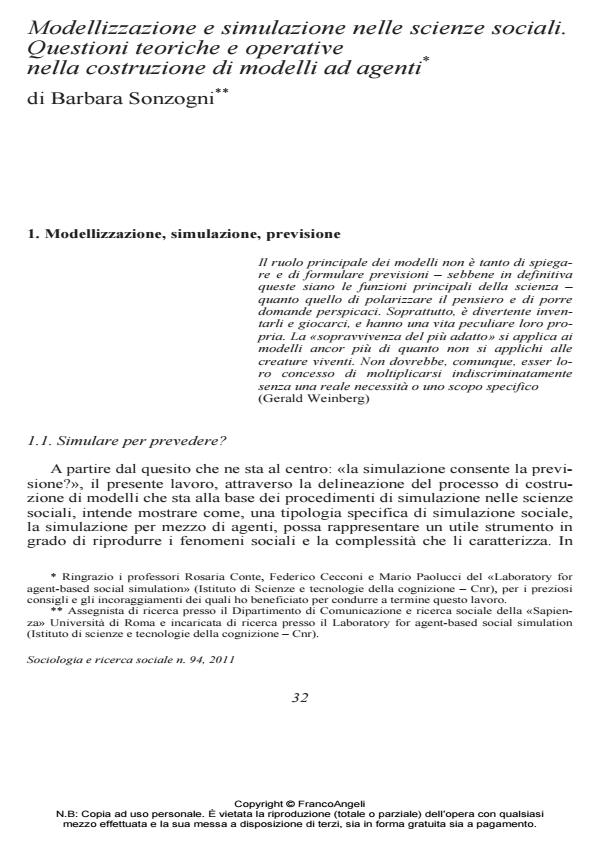Modeling and Simulation in Social Sciences. Theoretical and Operative Issues in building an Agent-based Model
Journal title SOCIOLOGIA E RICERCA SOCIALE
Author/s Barbara Sonzogni
Publishing Year 2011 Issue 2011/94
Language Italian Pages 47 P. 32-78 File size 794 KB
DOI 10.3280/SR2011-094002
DOI is like a bar code for intellectual property: to have more infomation
click here
Below, you can see the article first page
If you want to buy this article in PDF format, you can do it, following the instructions to buy download credits

FrancoAngeli is member of Publishers International Linking Association, Inc (PILA), a not-for-profit association which run the CrossRef service enabling links to and from online scholarly content.
This study stems from the central issue: «Does simulation consent prediction?». It outlines the process of model building at the basis of simulation procedures in social sciences, and aims to demonstrate how a specific type of social simulation, agent-based simulation, can be considered a useful instrument able to reproduce social phenomena and their complexity. In particular, through an excursus on theoretical and methodological implications of the concept of emergency, central in the epistemological debate on agentbased simulation, the possibility of bringing together micro and macro - two different levels of analysis often considered opposites - is strongly underlined. Sociology classics that consider it possible to harmonize these two levels are considered and, from a «Coleman Boat» perspective, the study demonstrates that micro and macro are not opposites, but very simply they are distinct levels of analysis, consequent to each other. From this point of view, agent-based simulation is represents an instrument able to offer the possibility of building models that include both of the above mentioned terms.
Barbara Sonzogni, Modellizzazione e simulazione nelle scienze sociali. Questioni teoriche e operative nella costruzione di modelli ad agenti in "SOCIOLOGIA E RICERCA SOCIALE " 94/2011, pp 32-78, DOI: 10.3280/SR2011-094002